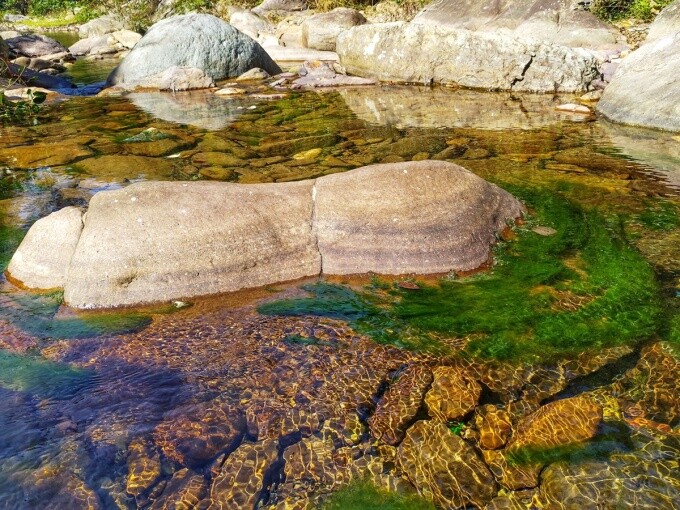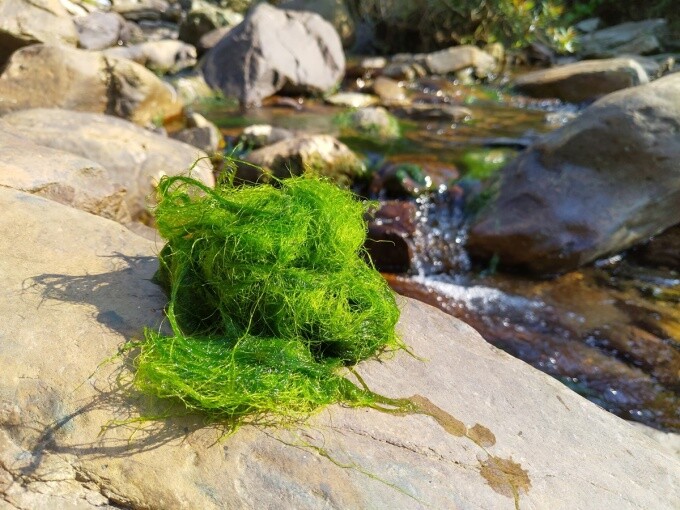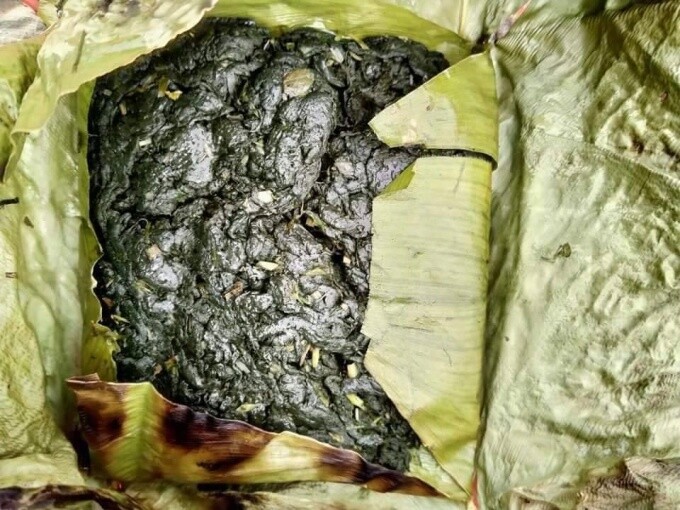According to experienced locals, there are three types of river moss: cui, cay, and tau. Cui moss grows in hair-like strands and has a slightly darker hue, while cay moss consists of sparse, green strands. Tau moss, on the other hand, forms patches in ponds or streams.

River moss is harvested from riverbeds and streams.
Ms. Xính, a resident of Tân Thành in Bắc Quang District, Hà Giang Province, shared: “We call it ‘catching’ moss because we consider it a delicacy, similar to fish or crayfish from the streams. Collecting moss is not arduous, but it requires caution. Experienced gatherers know where to find moss growing in clusters and on less slippery rocks. After harvesting, the moss is rinsed in stream water to remove sand and impurities. It is then spread out on a large, flat rock and pounded with a wooden log. Preparing moss demands patience as it needs to be washed and pounded several times to ensure cleanliness. A basketful of fresh moss usually yields just enough for a single meal. The moss has a deep green color and a soft, silky texture.”
Moss has a short lifespan, and it can be harvested 3-4 days after it starts growing. However, if left for more than seven days, it turns whitish and becomes inedible.”

River moss can be prepared in various delicious dishes
Ms. Xính added that traditionally, locals in the highlands have been preparing rustic dishes with river moss, such as moss soup, grilled moss, and stir-fried moss with garlic leaves. For a moss salad, young moss is chosen and steamed in a bamboo steamer until just cooked. It is then seasoned with fish sauce, MSG, and spices like ginger, coriander, and toasted and pounded chili peppers for those who enjoy a spicy kick.
In recent years, river moss dishes have gained popularity in restaurants and eateries across the Northwest region. Their unique flavor and appeal have attracted diners from near and far. Some visitors even get the chance to try their hand at ‘catching’ river moss and bringing it back as a special gift for their loved ones.
On online markets, cleaned and prepared river moss is sold in ziplock bags for around 35,000 VND per kilogram. Locals in these highlands have turned this natural gift into a source of additional income. The moss ‘harvest’ depends partly on the weather. If the conditions are favorable, one can earn hundreds of thousands of dong. To collect the moss, one must stand in the stream and use their hand to sweep across the rocks, collecting the youngest, freshest moss.

Grilled river moss on charcoal is a unique delicacy of Northwest Vietnam
Moss is primarily composed of fiber, which helps reduce blood fat, making it an excellent choice for those on a diet or aiming to lose weight.































